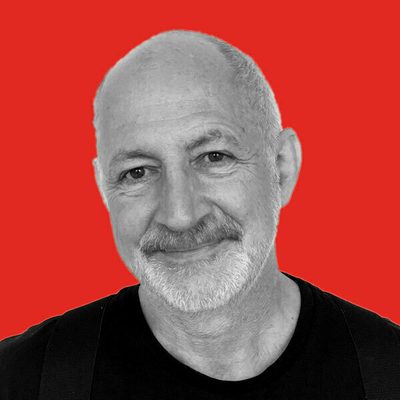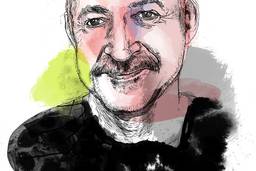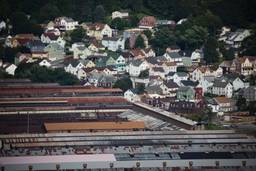The E. coli Free Market
The E. Coli outbreak is caused by the deregualtion and mass production of food by corporate agriculture’s economies of scale.
Joel Bleifuss

Since the advent of giant industrial enterprises in the late 19th century, corporate capitalism in the United States has been defined by its use of economies of scale to increase profits – profits further enhanced by the die-off of those businesses unable to compete.
Today, vast corporate enterprises – protected by a legal system that defines corporations as persons endowed with the same constitutional rights as flesh-and-blood people – control whole sectors of the U.S. economy, the three branches of government and the Fourth Estate (the mass media through which the public gets its information). The end result: an interconnected, self-reinforcing system of political power – Corporate America – that operates outside human control. (Of course, the machine is oiled by a class in thrall to their six, seven and eight figure paychecks.)
Concerns about life, liberty and the pursuit of happiness aside, the problem with this system is that it is, ultimately, unsustainable. Not only does this corporate behemoth chew up and spit out the people it employs as wage slaves, it gorges on resources of the natural world, disrupting the balance of life on Earth.
And when humans fuck with Mother Nature, she extracts revenge. Look no further than the Arctic’s drowning polar bears or the Sahara’s creeping deserts.
One could also look closer to home, to the 199 people fell who ill and the three who died after eating spinach contaminated with E. coli 157 bacteria. E. coli 157 was discovered in 1982, and now, on average, is responsible for some 20,000 infections and 200 deaths per year in the United States. Today, infection from E. coli 157 is the single greatest cause of kidney failure in children.
The origin of the recent outbreak is thought to be cattle that are fed a grain-based diet – more precisely the manure they produce. As researchers at Cornell University discovered in 1998, cows that graze or eat hay, as nature intended, do not produce the pathogen in their stomach.
The real culprit, in this case, is corporate agriculture, which uses economies of scale to mass produce food. And while the consumer may benefit in the form of lower prices, America’s agricultural communities bear the brunt of this consolidation. Consider these statistics. According to the Department of Agriculture, in 2001, 5 percent of U.S. farms, both corporate and family, raised 54 percent of the nation’s beef and dairy cattle, hogs and poultry. Ten percent of farm owners received 63 percent of the $27 billion in federal farm subsidies paid out in 2000. Between 1994 and 1996, about 25 percent of hog farmers, 10 percent of grain farmers and 10 percent of dairy farmers went out of business. Of the 50 poorest counties in the United States, all but one are rural and agriculturally dependent. The United States today has more people in prison than people farming. And, thanks to the war on drugs, more of those people in prison come from farm families, as crystal meth does to rural America what crack did to America’s inner cities.
Big concentrated farming operations also produce a lot of manure. Each year, factory farms generate some 500 million tons of manure. That waste is held in lagoons and then applied to fields from which it runs off into streams or seeps into underground water supplies, polluting the water with viruses, bacteria, pesticides, antibiotics, hormones and fertilizers.
Abby Rockefeller, a leading critic of the sewage industry and a proponent of human-scale agriculture, says factory farming has given manure, once a staple of agriculture, a bad name. “The excreta of factory farm animals, produced in vast quantities in the concentration pens and laced with antibiotics to combat the disease created in these horrific conditions, is indeed rightly called ‘waste.’ Stored in massive lagoons and stinking not of manure but of putrefaction, too repulsive to use, it has become a liability to the water, not a source of fertility that manure has always been.”
One of the defining aspects of corporate capitalism is its uncanny ability to profit from adversity. E. coli 157-contaminated spinach presents such an opportunity.
Into the breach stepped the nation’s sewage treatment industry, which wants to treat manure the same way it does municipal sewage. In the early ’90s, the industry convinced the Environmental Protection Agency to reclassify the sludge produced by nation’s sewer plants as a fertilizer to be spread across the land. To better sell this idea to the public, the sludge industry hired a PR firm, which invented the term “biosolids.” This attempt at linguistic detoxification succeeded. Today “biosolids” can be found in the Merriam-Webster dictionary.
So, where others see a mountain of E-coli 157 contaminated, factory farm cow shit, the sludge industry – which lobbies under the National Biosolids Partnership (a joint venture of the National Association of Clean Water Agencies, the Water Environment Federation and EPA) – sees opportunity: Tons upon tons of cattle feces waiting to be processed.
Representatives of the sewage treatment industry began calling for manure to be transformed into biosolids. Alan Rubin, the godfather of biosolids during his tenure at the EPA, lobbied the prominent environmental group National Resources Defense Council, praising the virtues of waste treatment as a solution to E-coli 157.
On September 26, Rubin sent “smoking gun” information on E. coli to Melanie Shepherdson, an NRDC staff attorney, via an e-mail obtained by In These Times. She replied, “Thanks for this Al. We put out a press release today related to the E. coli outbreak and I am meeting with the EPA [Office of Science and Technology] folks this afternoon … and I plan to tie in the E. coli outbreak.”
That press release, issued jointly by the Sierra Club, the Environmental Integrity Project and the NRDC, parroted the sludge industry line: “There are technologies available today that can reduce those pathogens by more than 99 percent.” The technology Sheperdson was referring to is the one that creates biosolid fertilizer out of municipal sewage sludge.
Rubin was ecstatic. He sent Maureen Reilly, a leader of the anti-sludge movement, a gloating e-mail: “THE RIGHT MATERIAL IS FINALLY GOING TO BE REGULATED!!!! Life is good!!!”
Of course the biosolid industry has a public perception problem. Who wants to eat food fertilized by everything that we put down the sewer? As the Sierra Club described them back in 2002, “Urban sludges are a highly complex, unpredictable biologically active mixture of organic material and human pathogens that contain thousands of industrial waste products, including dozens of carcinogens, hormone disrupting chemicals, toxic metals, dioxins, radionuclides and other persistent bioaccumulative poisons.”
In Monterey County, where the E. coli 157 contaminated spinach was grown, treated sewage water (the liquid remaining once sewage is turned into biosolids) from the Monterey Regional Water Pollution Control Agency (a nice name for a sewage treatment plant) is used to irrigate 12,000 acres of Monterey vegetable fields.
The industry claims that what it calls “recycled water” is free from pathogens. And Monterey Regional’s General Manager Keith Israel says E. coli 157 has never been found in the treatment plant’s wastewater. Up in Seattle, public health authorities are more realistic, but just as dismissive. According to the King County Public Health Web site: “Recycled biosolids may contain E. coli bacteria, but most strains of these bacteria do not cause disease. … Since [E. coli 157] is rare, only very tiny amounts of this strain would ever make it to sewage treatment plants.”
However, sewage treatment plants fail. And cattle manure enters municipal sewer systems in a variety of ways. While it is not known whether the fields from which the contaminated spinach came were among the 12,000 irrigated with Monterey’s treated sewage water, E-coli 157 contamination from such a source is not out of the question.
In an October 14 story titled “E. Coli’s Spread Is Still A Mystery,” the Los Angeles Times quoted Alejandro Castillo, a Texas A&M professor of food microbiology, as saying he thought it likely that “something, such as the irrigation system, magnified the effect” spreading the E.coli 157 from spinach leaf to spinach leaf.
In the end, Corporate America provides us with our choice of poison: Municipal sewage sludge or shit from factory farms.
Lost in the debate is the fact that the real solution lies in going back to a more nature-friendly, human-scale form of agriculture. The kind of agriculture that can support rural communities and provide healthy food for your table. But, hey, where is the corporate profit in that?
Joel Bleifuss, a former director of the Peace Studies Program at the University of Missouri-Columbia, is the editor & publisher of In These Times, where he has worked since October 1986.









